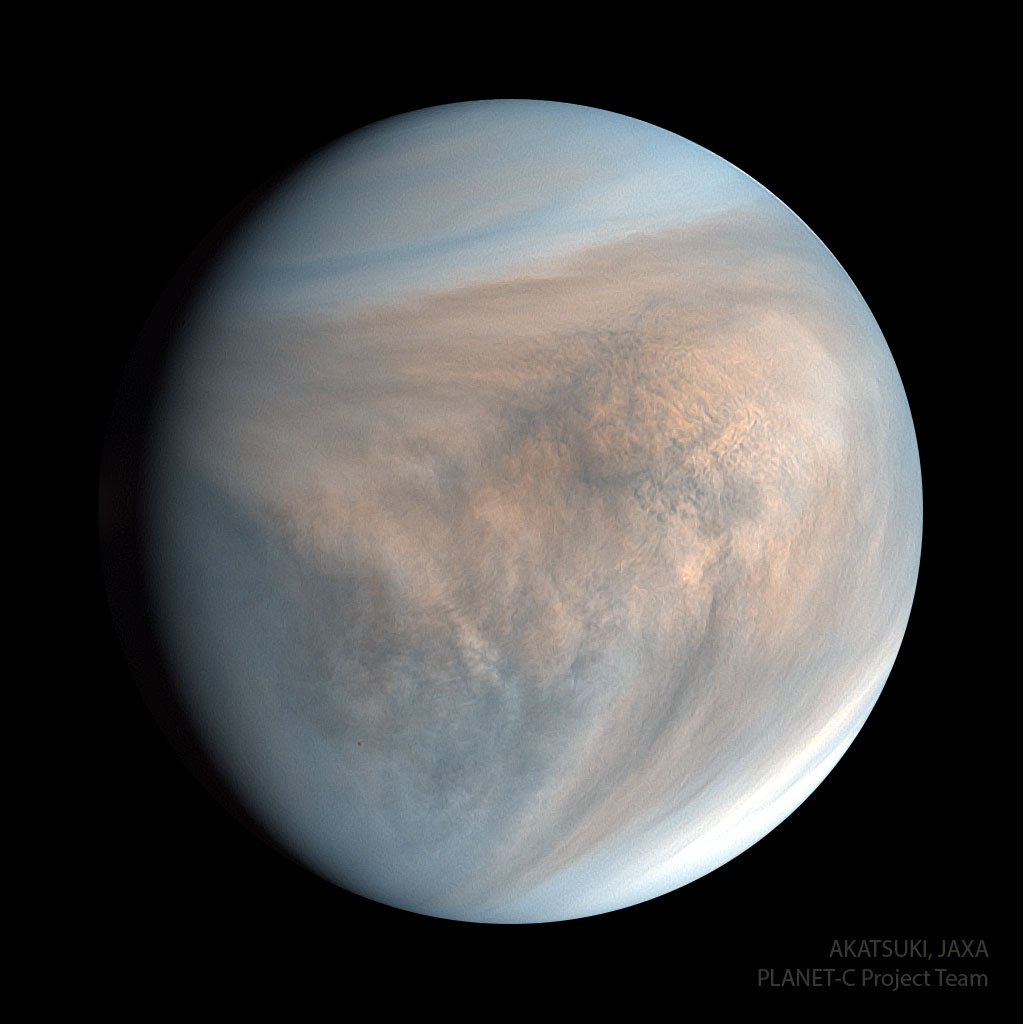2023年7月3日
Venus in Ultraviolet from Akatsuki
Image Credit & Copyright: JAXA, Planet-C Project Team; h/t: Mehmet Hakan Özsaraç
Explanation: Why is Venus so different from Earth? To help find out, Japan launched the robotic Akatsuki spacecraft which entered orbit around Venus late in 2015 after an unplanned five-year adventure around the inner Solar System. Even though Akatsuki was past its original planned lifetime, the spacecraft and instruments were operating so well that much of its original mission was reinstated. Also known as the Venus Climate Orbiter, Akatsuki’s instruments investigated unknowns about Earth’s sister planet, including whether volcanoes are still active, whether lightning occurs in the dense atmosphere, and why wind speeds greatly exceed the planet’s rotation speed. In the featured image taken by Akatsuki‘s UVI camera, the day-side of Venus is seen shown with planet-scale V-shaped cloud pattern. The image displays three ultraviolet colors and indicates a dip in the relative abundance of sulfur dioxide shown in faint blue. Analyses of Akatsuki images and data has shown, among other discoveries, that Venus has equatorial jet similar to Earth’s jet stream.
Tomorrow’s picture: sudden sky surprise
破晓号的紫外金星
影像提供与版权: JAXA, Planet-C Project Team; h/t: Mehmet Hakan Özsaraç
说明: 为什么金星和地球有这么大的差异呢?为找出答案提供助力,日本发射无人驾驶的破晓号探测器,并在历经5年规画外的内太阳系漫游之后,于2015年底入轨金星。纵然破晓号已经超出原订的任务期,但是探测器本体和仪器的功能仍运作如常,是以大部分的原始任务也重新启动。亦名为金星气候轨道探测器的破晓号,所搭载的仪器是要探索这颗地球姐妹行星的诸多未知,包括它的火山是否仍活跃,它的致密大气是否有闪电活动,以及为何金星的大气风速远超出它的自转速率。在这幅由破晓号紫外相机所拍摄的主题影像里,金星的白昼面有个V形的行星尺度云系。这幅影像呈现了3个紫外波段的数据,其中的淡蓝区,为二氧化硫相对浓度较低的区域。在经由分析破晓号的影像和数据所获得的众多发现之中,包括证实金星也有类似地球喷射气流的赤道喷流。 (Akatsuki spacecraft 破晓号探测器)
明日的图片: sudden sky surprise







